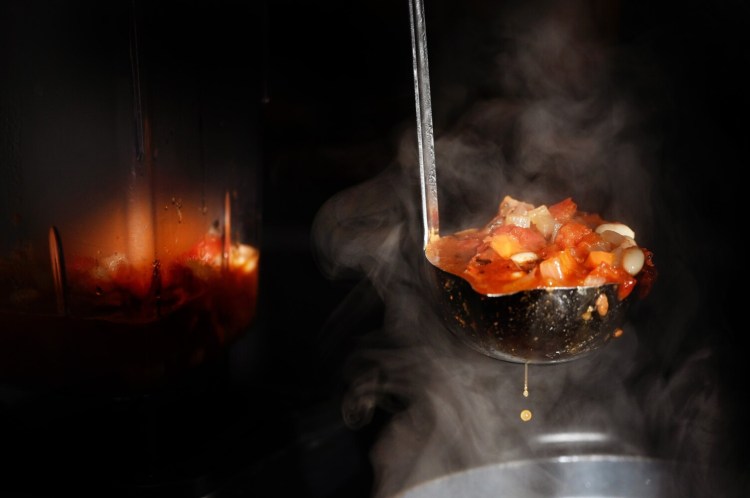Most writers read piles of articles and books they wished they’d written themselves. While envy almost always plays a niggling role, the reflection is more an exercise that both acknowledges a great idea and admires the writer’s follow-through in getting it published.
The book I wish I’d written is called “Twelve Recipes.” Cal Peternell, a chef who earned high praise during his 30 years at Alice Waters’ Chez Panisse, penned this cookbook, his first, in 2014, to teach his sons to cook well and intuitively at home. Peternell focuses on the core foods and dishes – from toast to cake – that he believes can equip the successful home cook.
Chapter 3 is all about beans. I turn to it often now that I’ve found a steady local supply of dried ones. While he acknowledges that several organic varieties of canned beans will do in a pinch, Peternell entices cooks to prepare a whole pot of dried beans as a creamier, more tender option. Put beans to soak as soon as you get home from the market, he advises.
“It will give you a feeling of accomplishment for the next 12 hours; no matter what else you’re doing, you’re also home cooking. You are a responsible, cleverly frugal, mature individual who knows what he wants for dinner tomorrow night and has the foresight to make it happen,” Peternell writes.
“It’s therapy with a pulse.” While I enjoyed Peternell’s pun on the food group here, and follow his sage advice on food prep psychology, I am not always having a great time getting to the bottom of my weekly pot of beans (1 pound of dried beans yields 6 cups cooked) with only two eaters sitting around the table most days. To avoid the unspoken “Beans again?” query from my husband, I’ve started hiding them.
If you mash them with a fork, you can mix them into meatballs, tuna salad, salmon cakes, vegetable lasagnas and breakfast sandwiches, most of the time. Using cooked beans in concert with long simmered, but highly flavored, pork or chicken stews, both stresses the meatiness of the meal and stretches the dish should we be low on next-day lunch options.
But what hides the beans the best is my blender when I use it to make pureed soups.
No matter the primary ingredient of a pureed soup, it likely can accommodate a few beans. My favorite hidden bean concoctions so far this season include roasted tomato (read on for the recipe ); broccoli and stilton, and cream of mushroom. In my testing, soup recipes with a least 6 cups of liquid can accommodate 1/2 cup of beans without changing the ratio of other ingredients. If you’ve got more beans you want to use in this fashion, add an additional 1/2 cup liquid for every 1/2 cup beans you add to be pureed. Check for seasoning after adding the beans as their salt content will affect the soup.
The beans will also make the soup slightly starchy. I find this pleasingly rustic, but should you prefer creamier soup, add 6-8 whole, raw cashews to the mixture before blending it. The oils in the nuts will yield a creamy mouthfeel and no one will know where you’ve hidden the beans.

This tomato soup hides a wholesome and climate-friendly ingredient. Shawn Patrick Ouellette/Staff Photographer Buy this Photo
Hidden White Bean and Tomato Soup
Serves 4-6
2 teaspoons olive oil
1 small onion, finely chopped
1 carrot, peeled and finely chopped
1 celery stalk, finely chopped
1 garlic clove, peeled
2 cups cooked white beans, drained
6 cups vegetable broth
2 (15-ounce) cans roasted, diced tomatoes
1 sprig fresh rosemary
6-8 whole raw cashews (optional)
Salt and pepper
1/4 cup yogurt or sour cream, for serving
Heat a large pot on the stovetop over medium-high. Add the oil, then onions, carrots, celery and garlic. Cook, stirring often, until the onion is soft, about 5 minutes. Add the beans, broth, tomatoes and rosemary. Bring to a boil, then reduce heat to medium-low. Simmer, covered, until the vegetables are tender, about 20 minutes. Remove the rosemary sprig.
Transfer the mixture to a blender. Add the cashews if desired, and process until smooth. Taste the soup for seasoning. Ladle it hot into bowls and serve with a dollop of yogurt or sour cream.
Send questions/comments to the editors.


